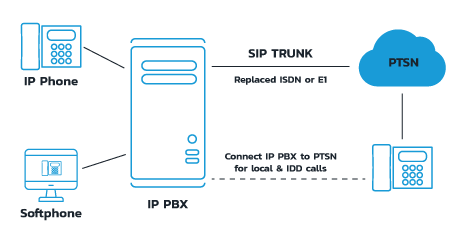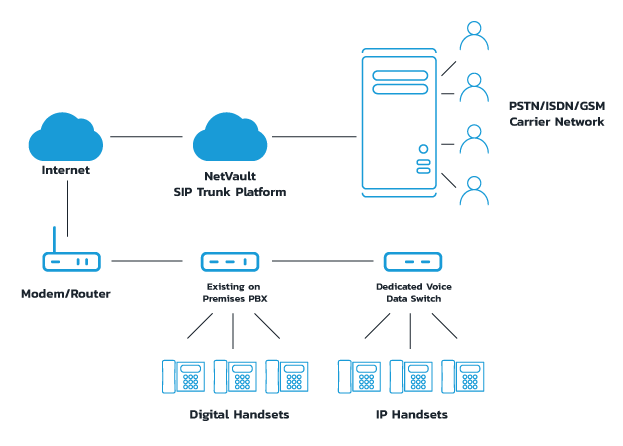-
Internet
Internet Overview
Internet connectivity tailored for business that goes beyond the standard options provided by mainstream providers.
Read MoreBusiness Ethernet Overview
Providing reliable connectivity, Business Ethernet is affordable and adaptable for anything from startups to growing companies.
Read MoreDirect Fibre Access Overview
DFA (direct fibre access) is a premium one-to-one type technology utilising fibre direct from your business to a data centre near you.
Read MoreProject Sonic Overview
Project Sonic is NetVault's 10 GPS cloud connection offering. It is a service that can be split into multiple sub-services for great convenience and value.
Read MoreNBN Enterprise Ethernet Overview
NBN Enterprise Ethernet is for when you want the reliability of symmetrical speeds across a dedicated bandwidth, whilst still running your internet across the NBN network.
Read MoreBusiness NBN Overview
This is internet connectivity across the NBN, which now represents the baseline for Australian businesses. Disrupting the dominance of Australian Telco providers, NetVault offers you a viable alternative in Business NBN.
Read MoreBusiness 4G LTE & 5G mmWave Overview
Business 4G LTE is an effective stand-alone product, however many businesses see the advantage in using it to stay connected, especially when the NBN is offline. 5G mmWave offers the faster speeds of 5G with even more bandwidth.
Read MorePrivate MPLS Overview
Private MPLS from NetVault offers a genuinely private connection; linking their data centres and your branch offices all through the one connection.
Read MoreSD-WAN Overview
Rather than via a fully private connection, SD-WAN connects across multiple internet connections. It provides superior agility to traditional VPN, as well as many other benefits.
Read More -
Telephony
TELEPHONY Overview
NetVault provides advanced yet affordable telephony technology. Using our solutions, your business can develop and deploy the expedient electronic transmission of voice, data and more.
Read MoreHOSTED PBX Overview
Free your business from old legacy phone systems, and move your phone system to the cloud. Hosted PBX allows you to do so without the high costs or typical complexity.
Read MoreHOSTED 3CX Overview
3CX is an internet software-based IP PBX communication technology which helps businesses to connect wherever they are to make and receive calls in a simple, flexible and affordable way.
Read MoreSIP TRUNKS Overview
SIP trunks represent the future in phone lines and can be run over a range of different networks, including the NBN. Ideal for businesses on-the-go.
Read MoreMicrosoft Teams Direct Routing Overview
Microsoft Teams Direct Routing is an add-on to your SIP trunk. It allows you to connect your SIP trunks to your teams so you can make phone calls out.
Read MoreMobile Plans Overview
Instead of dealing with the traditional carrier, NetVault can provide access to the wholesale division of top tier carriers to optimise a better experience.
Read MoreINBOUND 1300/1800 Overview
NetVault can provide 1300/1800 numbers at a cost-effective rate. Never miss any sales opportunity, as well as polish your company's professional image.
Read More -
Cloud
Cloud Overview
Cloud computing allows easy access to networks, storage, applications and other resources. You can opt to use your own cloud system or utilise NetVault's cloud computing infrastructure for added security and other benefits.
Read MorePublic Cloud Overview
NetVault Public Cloud, powered by OpenStack, provides a cost effective alternative to on premises infrastructure, while leveraging the benefits of public internet connections.
Read MorePrivate Cloud Overview
Leverage Enterprise Grade infrastructure and VMware vSphere Enterprise to give you and your clients the best dedicated cloud experience possible. Link this back to your network via MPLS for the best possible connection.
Read MoreHybrid Cloud Overview
Our hybrid cloud environment lets you choose the right workload for the right environment, as well as move workloads around as business needs and technologies change.
Read MoreCOLOCATION Overview
NetVault’s Colocation services provide carrier-grade Co-Location hosting facilities to accommodate your networking and telecommunications infrastructure.
Read More -
Satellite
Starlink Overview
About Starlink Project Halo Professional Installation Seamless Failover Monitoring and Reporting Rapid Deployment Kits (RDKs) Public Static IP addresses Data Centre InterconnectsOneWeb Overview
About OneWebProject Kuiper Overview
About Project KuiperIntellSat Overview
Intelsat Busienss Satellite Service
-
Data Centres
Data Centres Overview
With a fleet of data centres all around Australia, NetVault has all the data centre infrastructure you and your end users need from our national network.
Read More
NetVault DC1 - Brisbane Overview
Run by Equinix under the facility name BR1, this data centre was the home to NBNCo with the Brisbane Interim POI. NetVault DC1 is located in the heart Fortitude Valley, just a few kilometres from the Brisbane CBD.
Read More
NetVault DC2 - Brisbane Overview
NetVault DC2 is positioned in central Fortitude Valley, next door to Brisbane CBD. This data centre is run by Pipe Networks under the facility name PIPE DC3.
Read More
NetVault DC3 - Brisbane Overview
This building was actually the home to NetVault before it even became a NextDC facility. NetVault DC3 is located in the the middle of the Brisbane CBD. Run by NextDC under the facility name B1,
Read More
NetVault DC4 - Sydney Overview
The technology zone of Macquarie Park in Sydney is the home of NetVault DC4. A purpose-built facility and a flagship for the IT industry, DC4 boasts some of the biggest names in the Australian cloud industry as local tenants of the facility.
Read More
NetVault DC5 - Sydney Overview
NetVault DC5 is situated a short distance from the Sydney CBD in Alexandria. The part of a campus of data centres in Alexandria, DC5 is run by Equinix under the facility name SY3.
Read More
NetVault DC6 - Melbourne Overview
As one of the largest data centres in Melbourne, NetVault DC6 is run by NextDC under the facility name M1. DC6 is located a short distance from the Melbourne CBD in Port Melbourne.
Netvault DC6 – Melbourne
NetVault DC7 - Perth Overview
NetVault DC7 is located a short distance from the Perth CBD in Malaga. It is run by NextDC under the facility name P1 and is one of the largest data centres in Perth.
Netvault DC7 – Perth
NetVault DC8 - Brisbane Overview
As another of our data centres located optimally in Fortitude Valley, Brisbane, DC8 is also one of the city's largest. NetVault DC8 is run by NextDC under the facility name B2.
Netvault DC8 – Brisbane
NetVault DC9 - Sydney Overview
Sydney's only Uptime Tier IV certified data centre, NetVault DC9 is run by NextDC under the facility name S2. This data centre is located in the technology zone of Macquarie Park, Sydney.
Netvault DC9 – Sydney
NetVault DC10 - Melbourne Overview
NetVault DC10 is positioned in Tullamarine, close to major transport and telecommunications infrastructure. Run by NextDC under the facility name M2.
Netvault DC10 – Melbourne - Partners
- About
- Contact



























